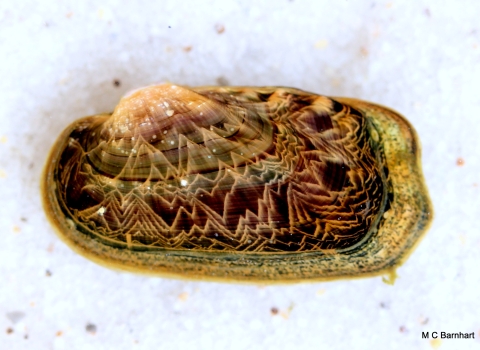DENVER — Things are looking up fora rare Colorado River fish, the endangered humpback chub. The U.S. Fish and Wildlife Service (Service) recently completed a species status assessment (SSA) and a 5-year status review that concluded the current risk of extinction is low, such that the species is not in danger of extinction throughout all of its range. The SSA explained that the largest population of humpback chub, which is found in the Colorado and Little Colorado rivers in the Grand Canyon of Arizona, is a stable population of about 12,000 adults.
Our SSA also explained that four smaller populations in the Green and Colorado rivers of the upper Colorado River basin have persisted and do not appear to be in immediate danger of extinction. All five populations are wild, persisting without the need for hatchery stocking. These population-monitoring results, when coupled with ongoing flow management and nonnative predatory fish control, mean that the humpback chub will be considered for reclassification from endangered to threatened in the next year.
Although this unique fish is making a big step toward recovery it still needs help. Conservation work by a diverse group of stakeholders has been one of the key contributions in recovering this native fish. State, tribal, federal, and private stakeholders collaborate via the Upper Colorado River Endangered Fish Recovery Program (established in 1988) and the Glen Canyon Dam Adaptive Management Program (established in 1997) to continue the monitoring programs and to reduce threats to this species’ recovery. “Endangered species recovery in altered and heavily managed ecosystems like the Colorado River is a complicated endeavor,” said Service Mountain-Prairie Regional Director Noreen Walsh. “Our best chance for continued success rests in the power of these collaborative partnerships.”
The humpback chub, which was first described as a unique species from collections in the Grand Canyon in the 1940’s, was not discovered in the upper Colorado River basin until the 1970’s. It was placed on the original list of endangered species in 1967. Humpback chub prefer canyon-bound reaches of river where they complete their life cycle in swift, turbulent currents. The species gets its name from the fleshy hump behind its head. That adaptation coupled with large, curved fins allows the species to maintain position in the turbulent flows. Habitat alterations (from changes in river flows and inundation of canyon reaches), and competition and predation from invasive species invasive species
An invasive species is any plant or animal that has spread or been introduced into a new area where they are, or could, cause harm to the environment, economy, or human, animal, or plant health. Their unwelcome presence can destroy ecosystems and cost millions of dollars.
Learn more about invasive species are the greatest threats to the humpback chub.
In the 5-year review, the Service also recommends that the species recovery plan be revised to incorporate the best available scientific information on the species needs and actions that will be necessary to eventually delist humpback chub. Efforts to propose reclassification and to revise the recovery plan will be ongoing in the coming year. The proposed reclassification rule and the revised recovery plan will be made available for public comment in the future.
The mission of the U.S. Fish and Wildlife Service is working with others to conserve, protect, and enhance fish, wildlife, plants, and their habitats for the continuing benefit of the American people. For more information on our work and the people who make it happen in the West, connect with us through any of these social media channels: Facebook, Twitter, Flickr, YouTube, and Instagram.


